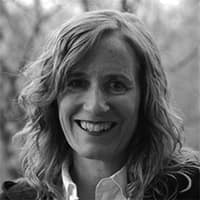Embry-Riddle Student Team Earns First Place in NASA Human Lander Challenge

An Embry-Riddle Aeronautical University student team took first place in the NASA 2025 Human Lander Challenge (HuLC) for developing an innovative spacecraft fuel gauge system to tackle a propellant issue critical to the success of space exploration missions.
NASA experts who judged the competing teams’ presentations selected the team of student researchers from Embry-Riddle’s Prescott, Arizona, campus as the overall winner among 12 finalists, awarding the team the challenge’s grand prize of $10,000. Old Dominion University placed second, receiving a $5,000 prize. MIT came in third, receiving $3,000. The final competition was held in Huntsville, Alabama, near NASA’s Marshall Space Flight Center, from June 24 to 26.
“This is a major accomplishment against tough competition,” said Dr. Jeremy Ernst, Embry-Riddle’s vice president for research and doctoral programs.
NASA’s HuLC, an initiative in its second year, is designed to address challenges in the development of human landing systems by involving undergraduate and graduate students in the generation of new technologies. This year’s challenge was focused on cryogenic, or super-chilled, fuel storage and transfer. The Artemis III mission, which will send astronauts to explore the moon’s South Pole with a human landing system, will require systems to manage its cryogenic propellant for several weeks or months.
“This partnership not only accelerates cryogenics technology development but also prepares the Artemis Generation — the next generation of engineers and scientists — to drive future breakthroughs in spaceflight,” said Tiffany Russell Lockett in a NASA news release announcing the contest winners. Lockett is the office manager for NASA’s Human Landing Systems Mission Systems Management Office.
Dr. Kenneth Witcher, chancellor of Embry-Riddle’s Prescott Campus, said that “winning a national NASA competition judged by agency experts is an extraordinary achievement that reflects the talent, drive and ingenuity of our students.”
“This recognition not only elevates the team’s academic and professional trajectory — it also showcases how Embry-Riddle’s hands-on, research-driven approach prepares students to lead innovation in aerospace and beyond.”
A Fuel Gauge for Space
The Embry-Riddle team attacked the problem of accurately gauging how much propellant a spacecraft carries while in the microgravity environment of space.
“Think of it like a car on Earth. You can weigh the fuel tank to figure how much fuel is left,” said Grant Bowers, a rising senior in Software Engineering and the deputy project manager of the student team. “But in space, your car is floating around, and the fuel tank can’t push on a sensor to weigh it because of the lack of gravity. Furthermore, the fuel is even floating around inside of the tank, so how are you supposed to tell how much fuel you have?”
The team’s proposed system calls for arrays of electrodes that emit electric signals and sensors to line the interior of the propellant tank walls. The device would provide cross-sectional images, similar to those of a CT scan, of the tank. Dramatically increasing the accuracy of the system is a machine learning algorithm. The algorithm, when applied to the cross-sectional measurements, can approximate the tank’s contents on a continuous basis.
Dr. Siwei Fan — assistant professor of Aerospace Engineering and faculty advisor, along with Dr. Ron Madler, professor of Aerospace Engineering — said that the current methods used for spacecraft propellant gauging produce uncertain results.
“When uncertainty is high, it impacts mission planning and operation greatly,” he said.
Many spacecraft carry extra fuel, Bowers said, to account for the frequent inaccuracy. “By providing accurate fuel information at all stages of flight, we can save fuel and mass usage for all spacecraft,” he said, adding that the team is pursuing a patent for the technology.
David Clay, a rising senior in Aerospace Engineering in the Astronautics track and media officer for the team, said the problem of “propellant tracking is one that plagues every self-propelled spacecraft and its mission designers.”
Fan called the students on the team “extremely dedicated and passionate.”
“They came in with great curiosity,” he said. “They just want to know more and do more.”
He also said the senior members of the team provided excellent mentorship to the newer members.
“All of this allowed the team to acquire knowledge rapidly and efficiently, and ultimately made them successful,” Fan said, adding that cryogenic fluid is not his primary area of research and that he learned a lot from the students.
Clay said he thinks “solving these hard problems of spaceflight” prepares students well for work in the space industry. This kind of research and development, he said, acquaints students “with a real project lifecycle.”
Sanaya Nichani, a rising junior in Aerospace Engineering in the Astronautics track and testing engineer for the project, said working with the team has been “one of the most rewarding experiences of my life.”
Other students on the winning team included Bruce Noble, Jakobe Denby, Aidan Kihm, Owen Smith, Cooper Nelson, Max Klein, Christopher LeClair, Connor Shackelford and Ian Naegeli. The club that the winning team represents, the Professional Association of Research for Space Engineering Concepts (PARSEC), will be selecting more than a dozen new members in the upcoming academic year. Interested students can learn more about the club here.

 Michaela Jarvis
Michaela Jarvis